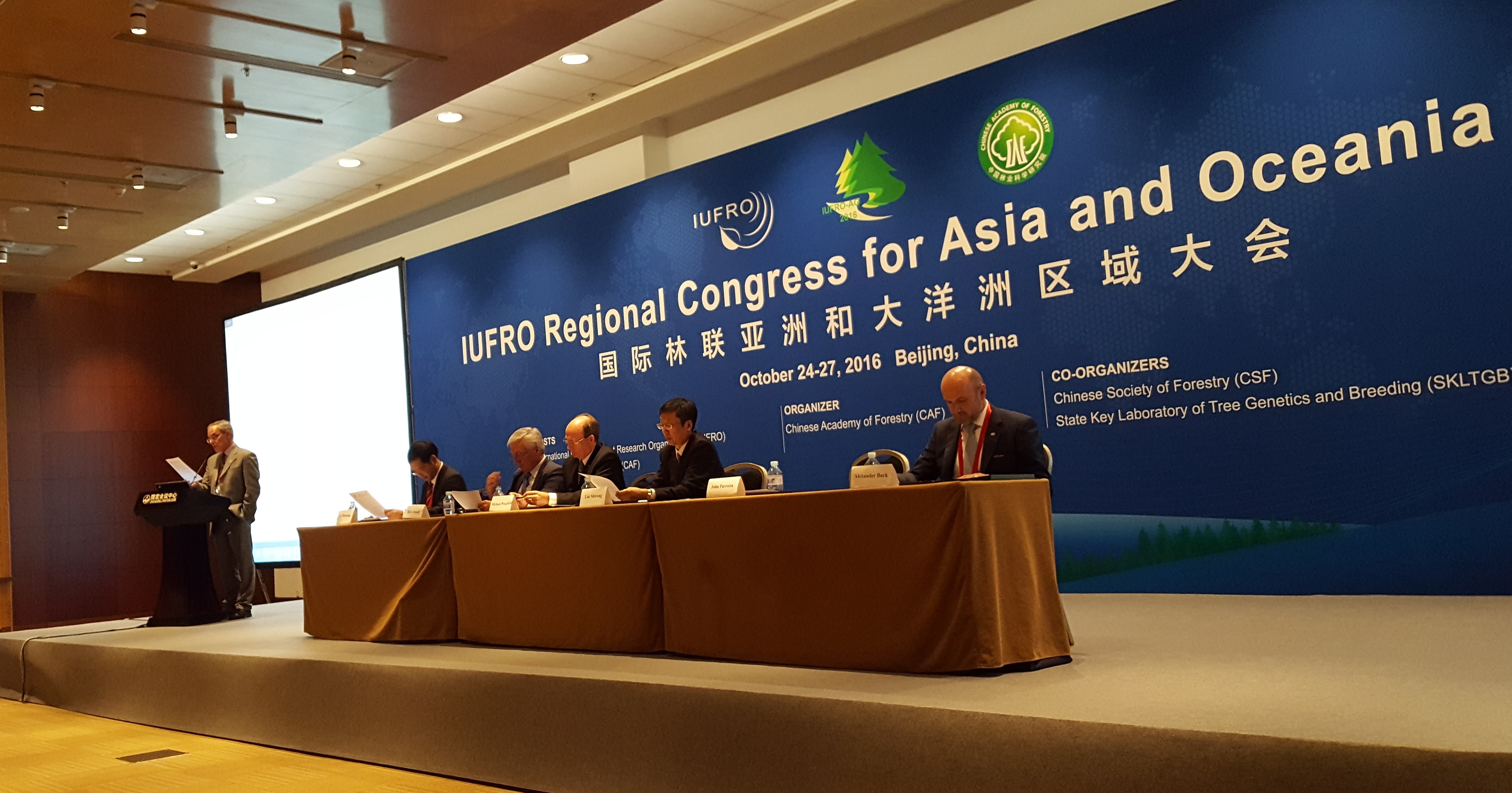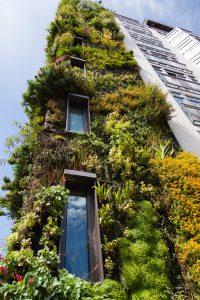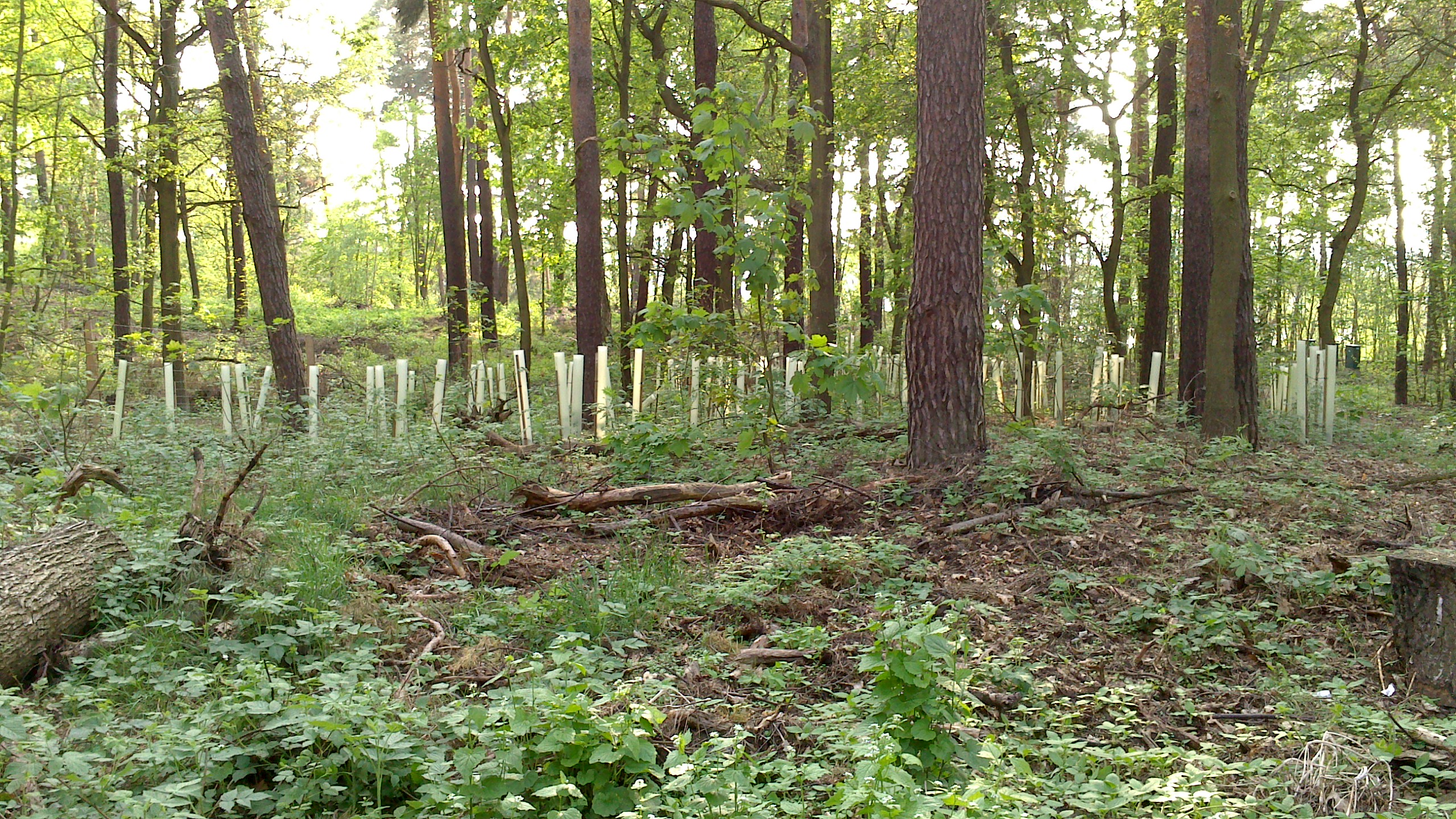IUFRO Spotlight #66 – A forest mix may best address global change
IUFRO Spotlight #66 – A forest mix may best address global change

Managing a mixed forest in the context of environmental and social change is the focus of a recent publication put together by members of IUFRO Research Group 1.09.00 (Ecology and Management of Mixed Forests).
The structure, dynamics and functioning of such forests are increasingly relevant topics for researchers.
Read more…IUFROAO2016 – The Beijing Declaration
IUFRO Regional Congress for Asia and Oceania 2016
24 – 27 October 2016, Beijing, China
Forests for Sustainable Development: The Role of Research
The Beijing Declaration

IUFRO Vice-President John Parrotta presenting the Beijing Declaration. Photo: Gerda Wolfrum, IUFRO Headquarters
Nature-based solutions to climate change mitigation and adaptation
Session D8-03(42)
Moderator: Xiaoquan Zhang
Tuesday, 25 October 2016, 10:30-12:30 (Room 305)

Green hotel. Photo: Vera Kratochvil
During the past 15 years, the rapid expansion of fossil fuels usage has raised global greenhouse gas emissions to the highest levels to date. This has led to a rise in surface temperatures and a significant increase in climate-related risks, including the loss of sea ice in the artic ocean, reduction of mountain glaciers, sea level rise, loss of endangered species, to name but a few.
In urban territories, solar energy and heat are absorbed to a greater extent than in rural areas, thus reducing the evapotranspiration and creating warmer environments. Consequently, the energy demand for cooling is expected to grow strongly with climate change. However, in many cities there is a potential for cooling urban microclimates through adding vegetation and trees and greening roofs and city areas. This will not only help to save energy, it will also be beneficial to the health and quality of life of city dwellers. Read more…
Congress Spotlight #20 – The climate’s changing: So should forest management
The climate’s changing: So should forest management

In Berlin, the capital city of Germany, a comprehensive program of converting pine stands into close-to-nature mixed forest is being implemented, thus making the forest more resilient to future climate change effects, for example. (Photo by IUFRO)
As a joke, people used to say: “If you don’t like the weather, just wait a minute. It’ll change.”
Now they say that about the climate – but they’re a lot more serious.
The rapidly changing climate will precipitate related changes throughout nature. And that includes the world’s forests.
Anticipating climate change impacts on forests and adapting policies and management strategies to mitigate those impacts is critical to maintain the health of those forests and, by extension, of the earth.
“Forest management for adaptation to climate change” is the theme of a session being presented at the 24th IUFRO World Congress in Salt Lake City this fall, by Drs. Rodney Keenan of the University of Melbourne, Australia; Carina Keskitalo of Umeå University, Sweden; Kalame Fobissie of the World Wildlife Fund Central Africa, Cameroon; and Guangyu Wang of the University of British Columbia, Canada.
IUFROLAT III Session Highlights: What REDD+ Looks Like on the Ground
What REDD+ looks like on the ground: evidence from the Amazon and beyond
Moderator: Niels Elers Koch, IUFRO President
Thursday, 13 June 2013, 08:00 – 10:00 (Santa Rosa 2)
Agricultural expansion has been identified as a key driver of deforestation in developing countries. The IPCC estimated that carbon dioxide emissions, as a consequence of deforestation, amounted to 20% of all anthropogenically induced carbon dioxide emissions in the 1990s. Reducing Emissions from Deforestation and Forest Degradation in developing countries (REDD+), has been proclaimed an environmental policy instrument that could potentially provide mitigative benefits for net carbon emissions and biodiversity degradation.
In the session entitled “What REDD+ looks like on the ground: evidence from the Amazon and beyond”, leading scientists addressed the relationship between biodiversity, carbon, forests and people, as well as experiences with the operationalization of REDD+ in Latin America.
The Global Forest Expert Panel (GFEP), which is coordinated by IUFRO, presented a global assessment report on REDD+, which consolidates the research of more than 50 leading scientists. The report constitutes a comprehensive analysis of the synergies and trade-offs between biodiversity, forest management and REDD+.
The assessment report proposes that biodiversity is paramount, as a prerequisite for providing ecosystem services. In the face of disturbance regimes such as climate change, ecosystem resilience, a product of biodiversity, ensures ecosystem service provision.
Moreover, a successful REDD+ implementation, that achieves mitigative net carbon emissions and ensures biodiversity provision, requires, in conjuncture with the implementation, the pursuit of social objectives by securing tenure rights and local engagement. Only when tenure and property rights are clearly defined can a REDD+ implementation be effective.
The session also included presentations on a global comparative study entitled “What REDD+ looks like on the ground: Carried out by CIFOR”. The study, which is t largest project ever undertaken by CIFOR, aims to provide scientific insights on how to ensure that REDD+ measures meet the three “E’s”; Effectiveness, Efficiency, Equity. As the first phase of the study has been completed, the findings of four cases were presented during the session. For more detailed information please visit the CIFOR webpage.
The Global Forest Expert Panel report can be downloaded at www.iufro.org/science/gfep
Presentations in this session:
Understanding relationships between biodiversity, carbon, forests and people: the key to achieving REDD+ objectives (John Parrotta, US Forest Service, USA)
What REDD+ looks like on the ground (Amy Duchelle)
Smallholder typology at a REDD+ project site in the Eastern Brazilian Amazon. (Marina Cromberg, CIFOR, Brazil)
Analyzing payments for environmental services as a way to improve social, economic and environmental resilience in rural settlements in northwestern Mato, Grosso, Brazil. (Raissa Guerra, University of Florida, Brazil)
Conservation transfers, livelihoods and land use: the case of Bolsa Floresta, Amazonas, Brazil (Amy Duchelle and Kim Bakkegaard)
Livelihoods, land use, land cover change and the implications for REDD+ in Brazil nut concessions in the Peruvian Amazon. (Valerie Garrish, CIFOR)
